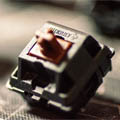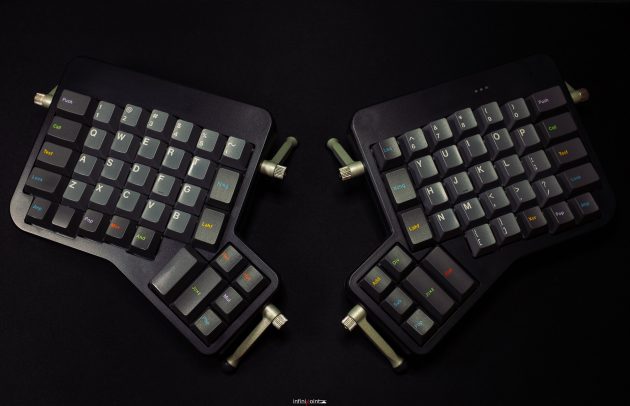Keyboard Wonderland – ENGLISH Version – Part I

Layouts part II – Horizontal stagger VS Ortholinear VS Vertical stagger
Keyboards have inherited the horizontal stagger of their elder kin, the typewriters of old. The former have a reason for it following an immutable logic imposed by the mechanics of their build – if there was no stagger then the mechanical linkages between the keys and the levers would not have been possible. As one user on Stack Overflow states, it was a case of path dependence.
Modern keyboards kept this horizontal stagger because it made switching from a typewriter much more comfortable. And this is perfectly fine.
However, somebody disagreed and stated that the horizontal stagger is a relic of times long past and is unnecessary in a modern keyboard and it may increase the risk of RSI. Thus the ortholinear layout was born, where keys are arranged in a grid, one next to the other, similar to how tablets are snuggled in a chocolate.
Then somebody disagreed with the above and designed a keyboard where keys were better aligned with the relaxed position of the hands on the desk, keeping the ortholinear layout but dividing the keyboard in two valleys containing the keys. And so the Kinesis was born in 1992.
Then somebody midly disagreed with the above and designed a keyboard whose keycaps were not only aligned with the natural position of the hands on the desk, but also with the natural position of the fingers. Drawing inspiration from the Kinesis and the Key64 project, Dominic Beauchamp (aka Dox) has created the ErgoDox Project – giving birth to the ortholinear vertigal stagger layout arranged from 76 keys. The ErgoDox Project has been an Open Source project so there is more than one manufacturer for these around – examples being Falba Tech who are dealing with wood ErgoDoxes or ZSA with their ErgoDox EZ and the more recent Moonlander.
Atypical keyboards like the Planck, Kinesis, ErgoDox live and die by QMK, which allows the user to adapt the keyboard to their personal needs. Kinesis have made major progress over time when it comes to software. QMK however offers superior flexibility and customisability in an Open Source package.
ErgoDox continued to deliver more and more projects inspired by it like the Kyria, Corne, Lily58, and so on – layouts derivative from the ErgoDox with less keys, added encoders and OLED screens, as well as the coveted RGB.

Comentarii












Kinesis copied Maltron.
Ian, I’m sorry, but if you point far enough backwards in time a germ gets blamed for splitting in two. Maltron had the ideas but the execution has been thoroughly terrible throughout time and they never caught on. At the same time I didn’t want to touch upon too much history because the article is complex enough as it is.
That being said, Kinesis is one of the first actually ergonomic keyboards that is actually good and was available and came up in searches online back around 2005ish, so I went with it as the contemporary origins. Maltron will always be remembered for this abomination which sold for $400 – https://youtu.be/fkGpFeUQ49Y
Pingback: PFU/Fujitsu Happy Hacking Keyboard Professional Hybrid Type-S ENGLISH version – next lab501